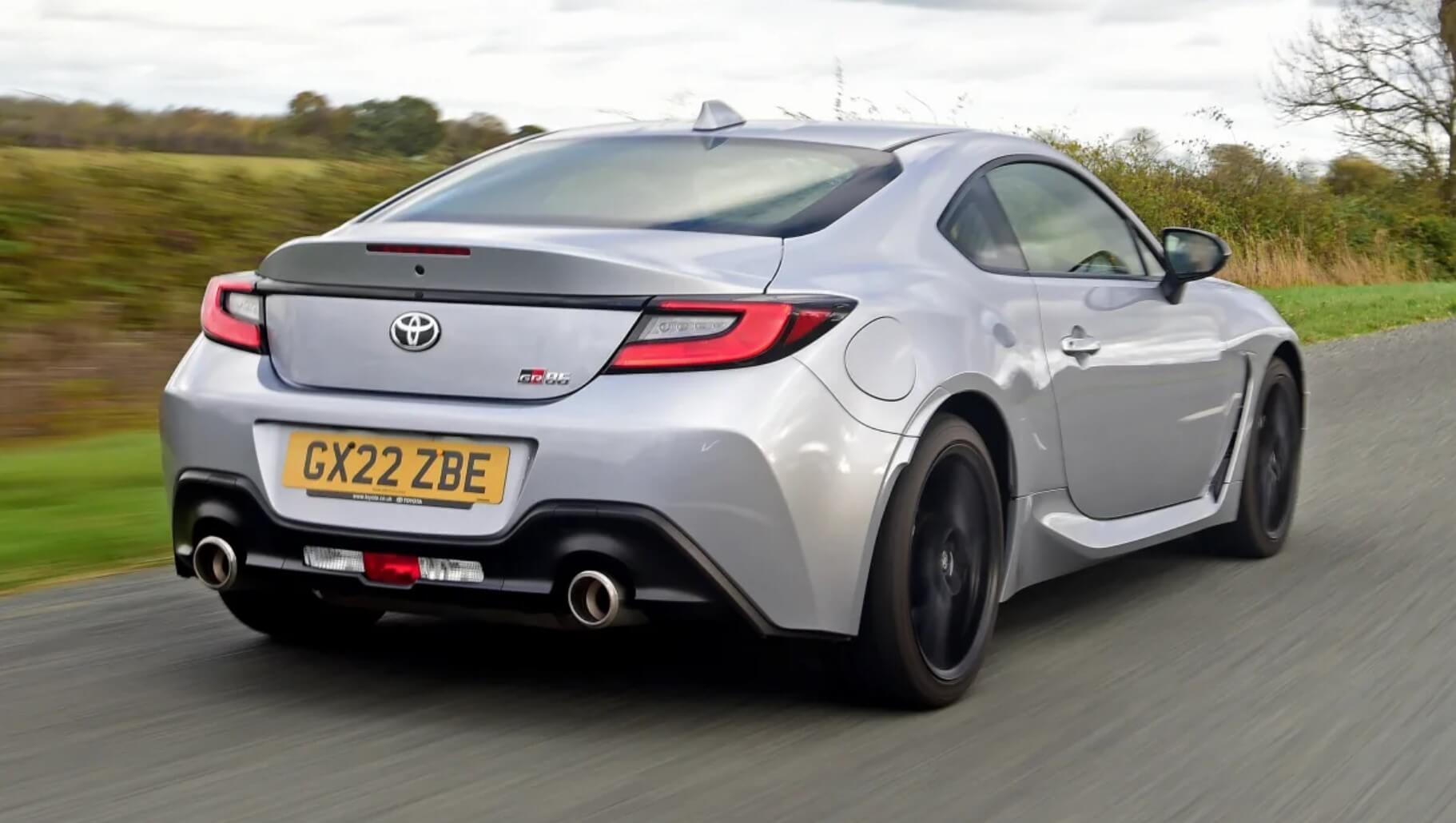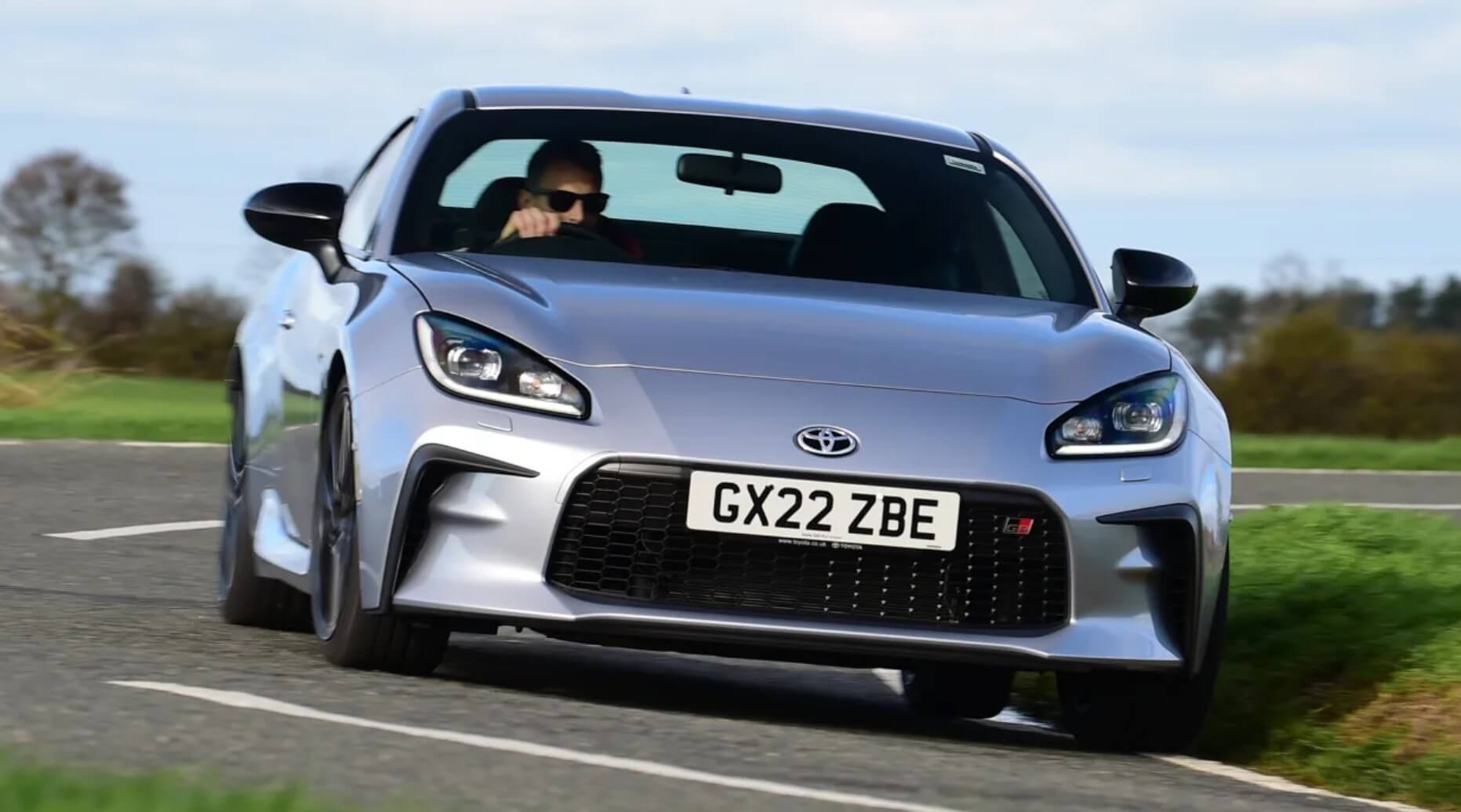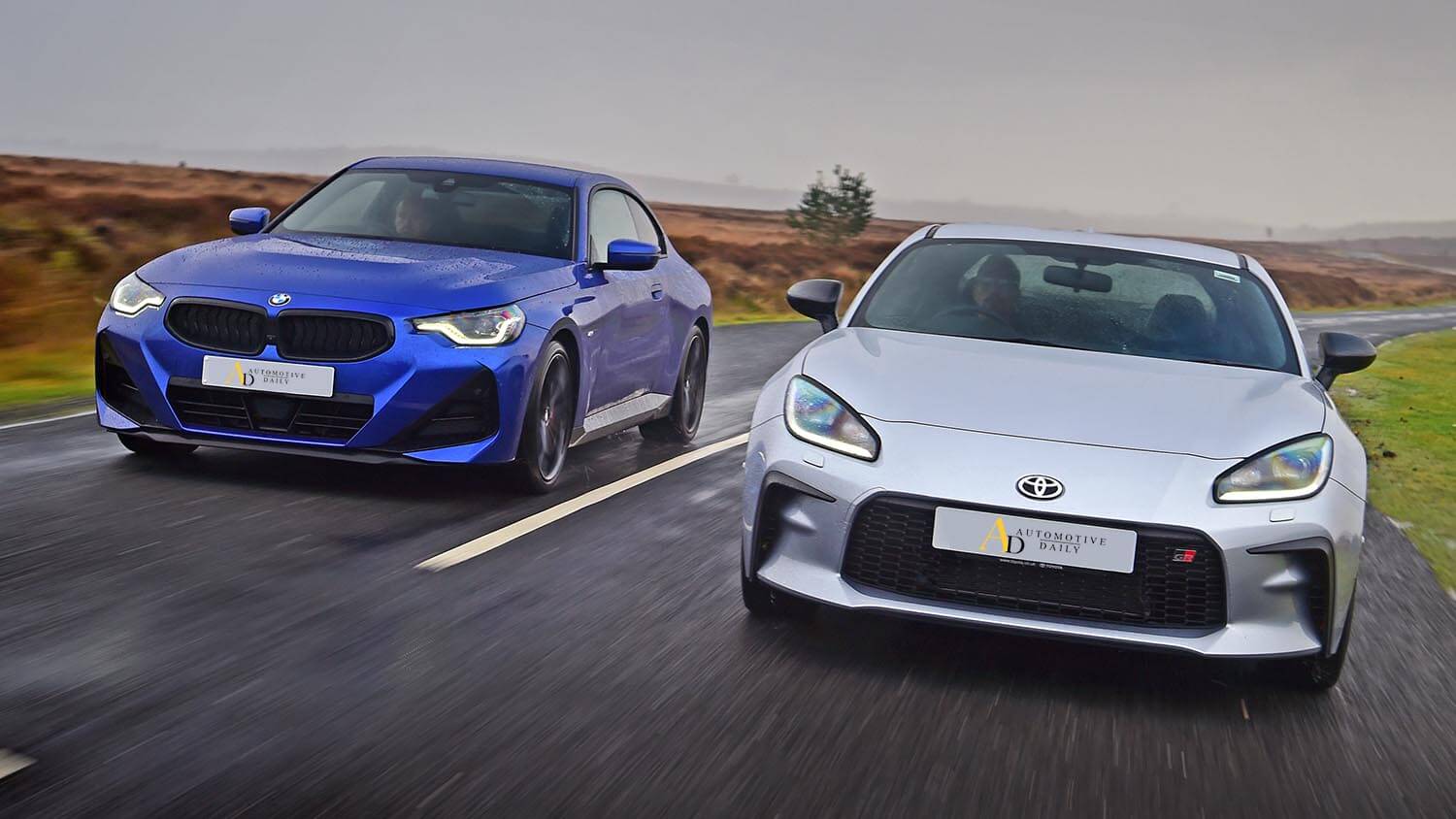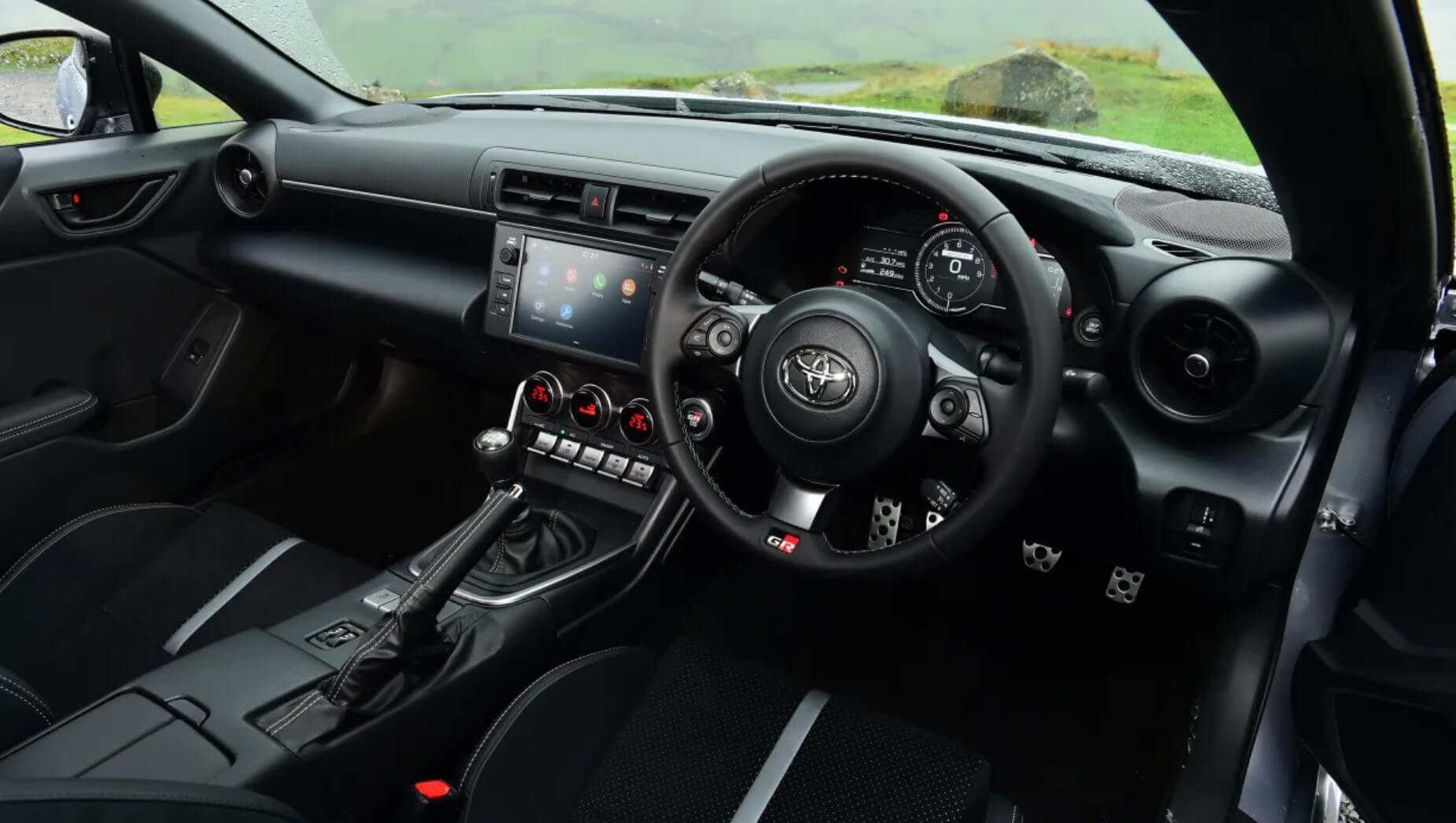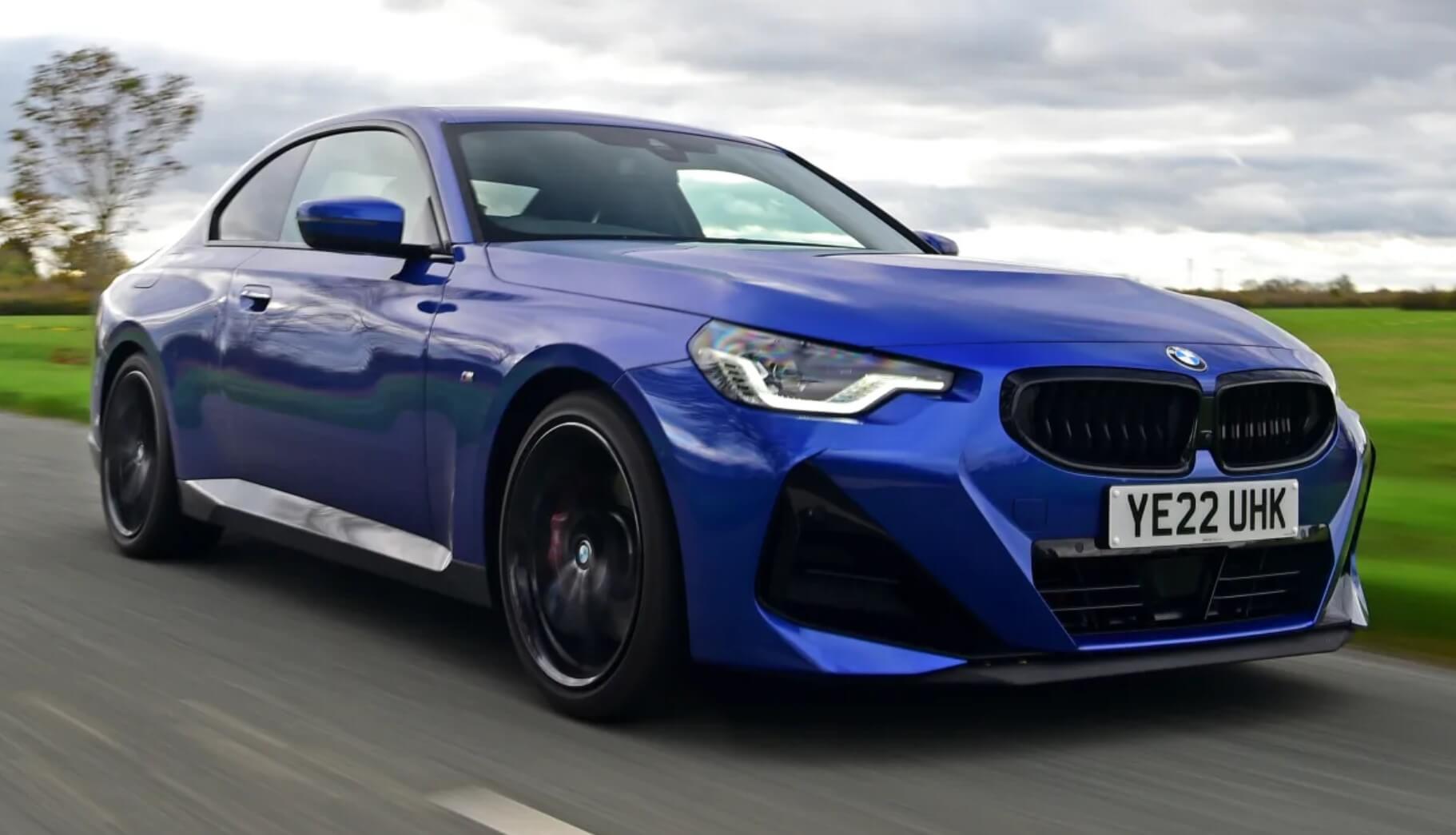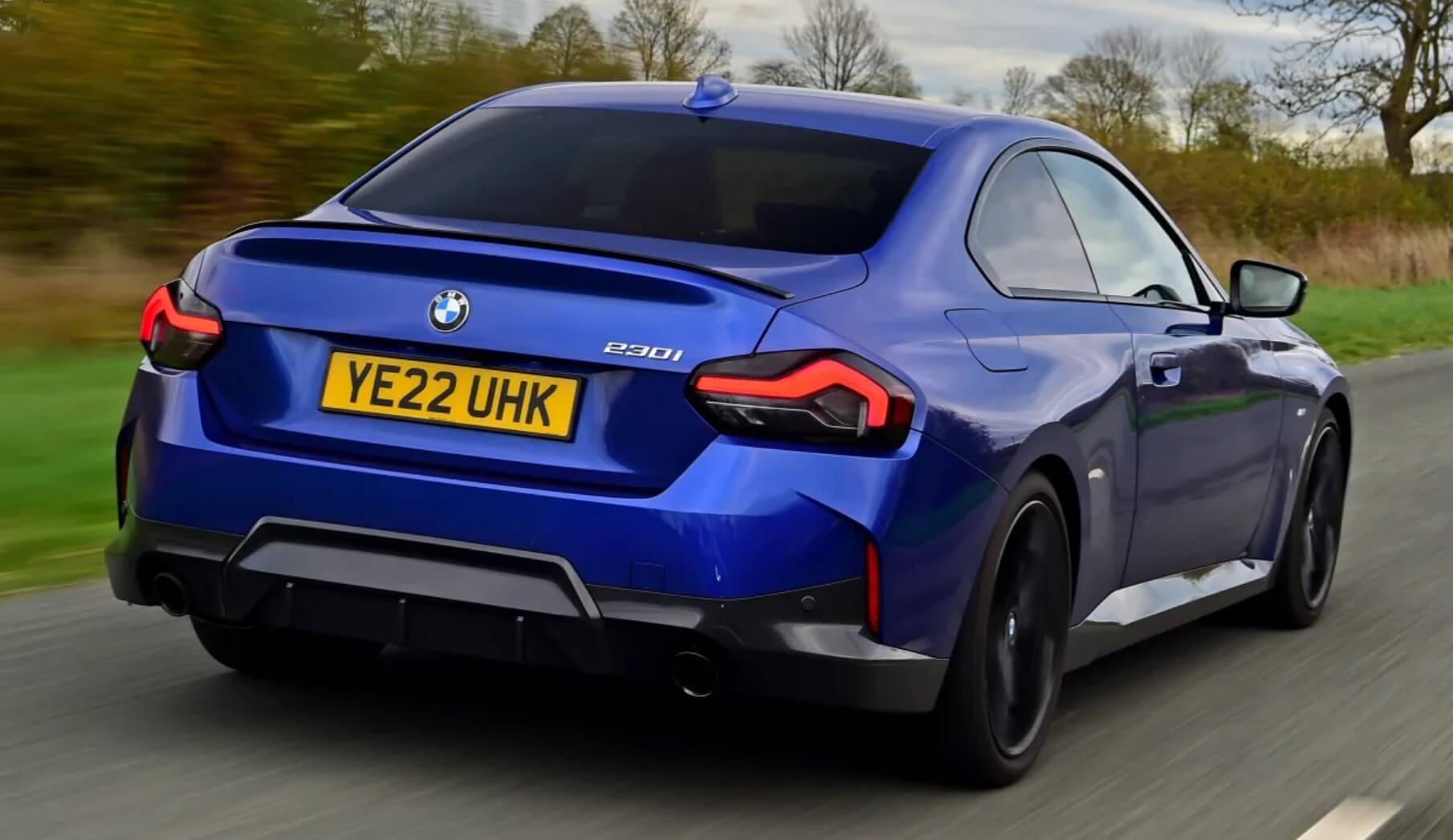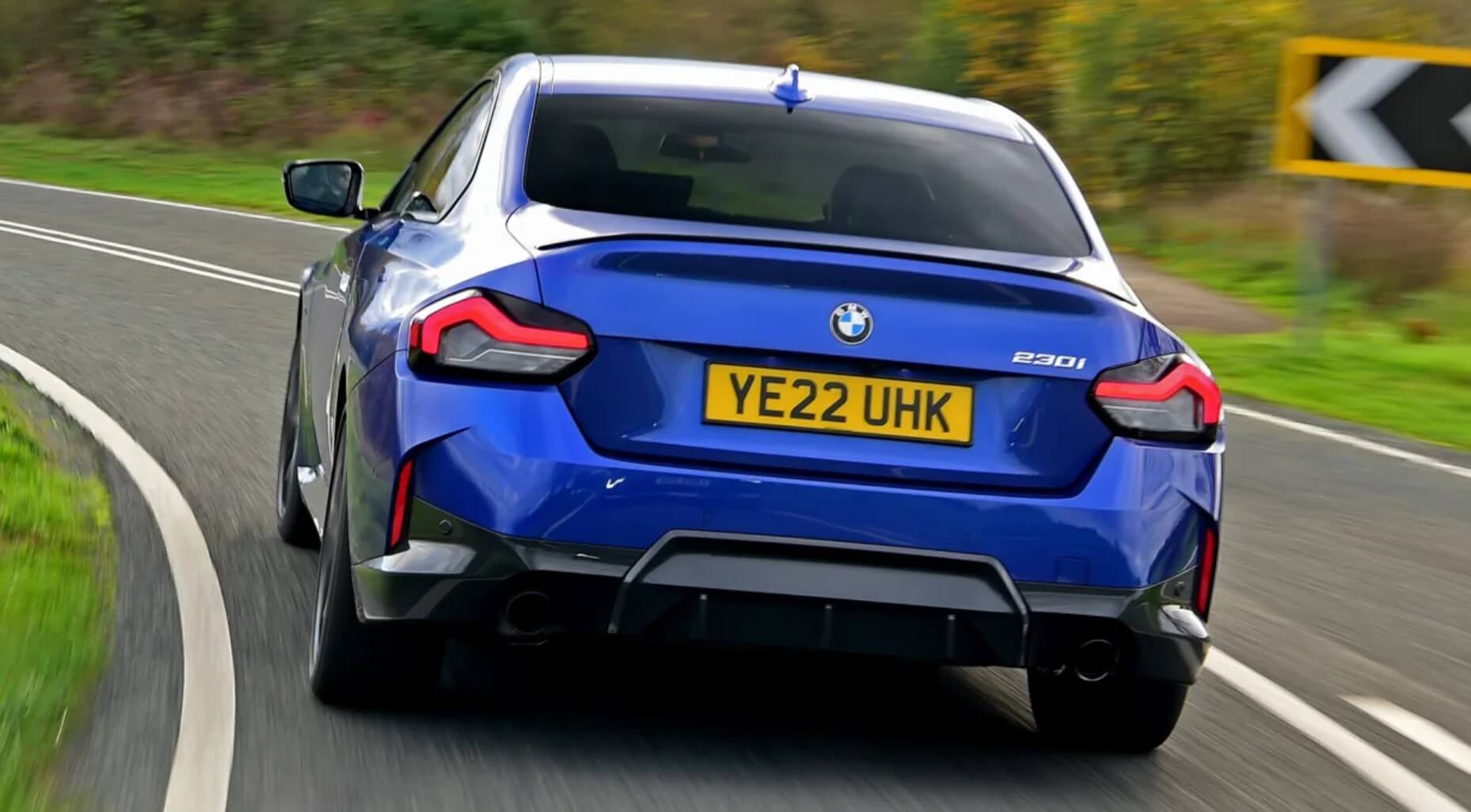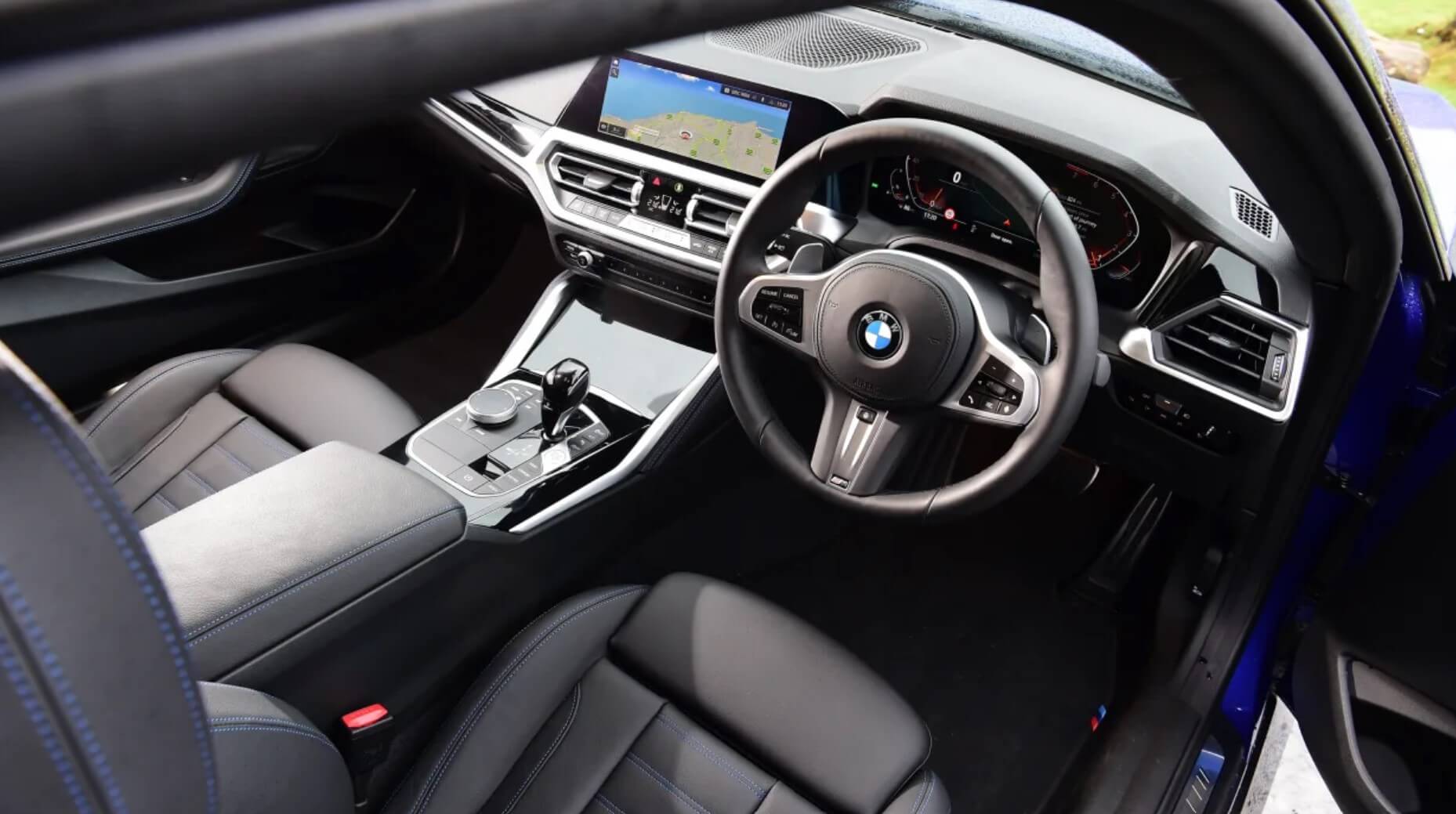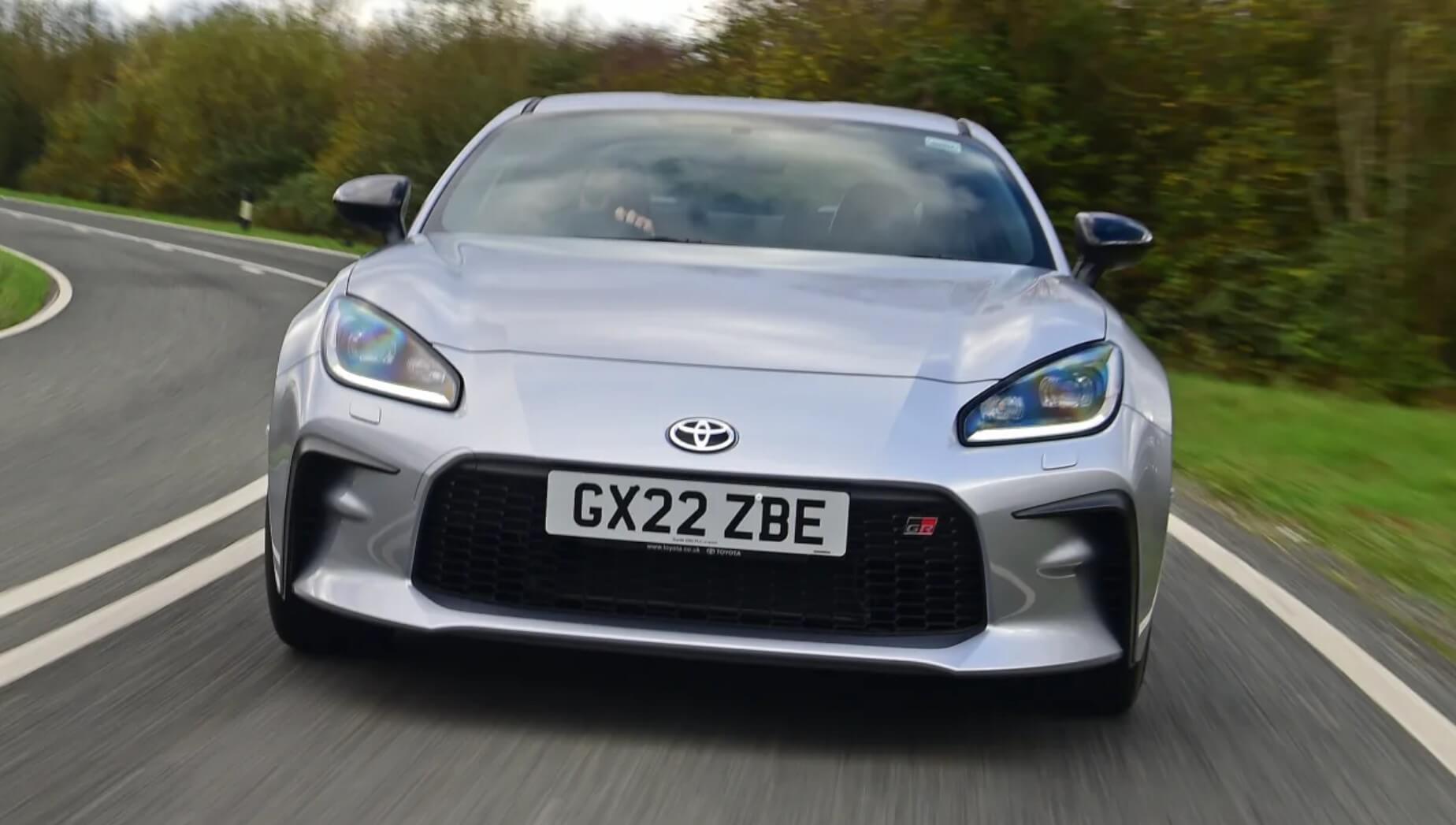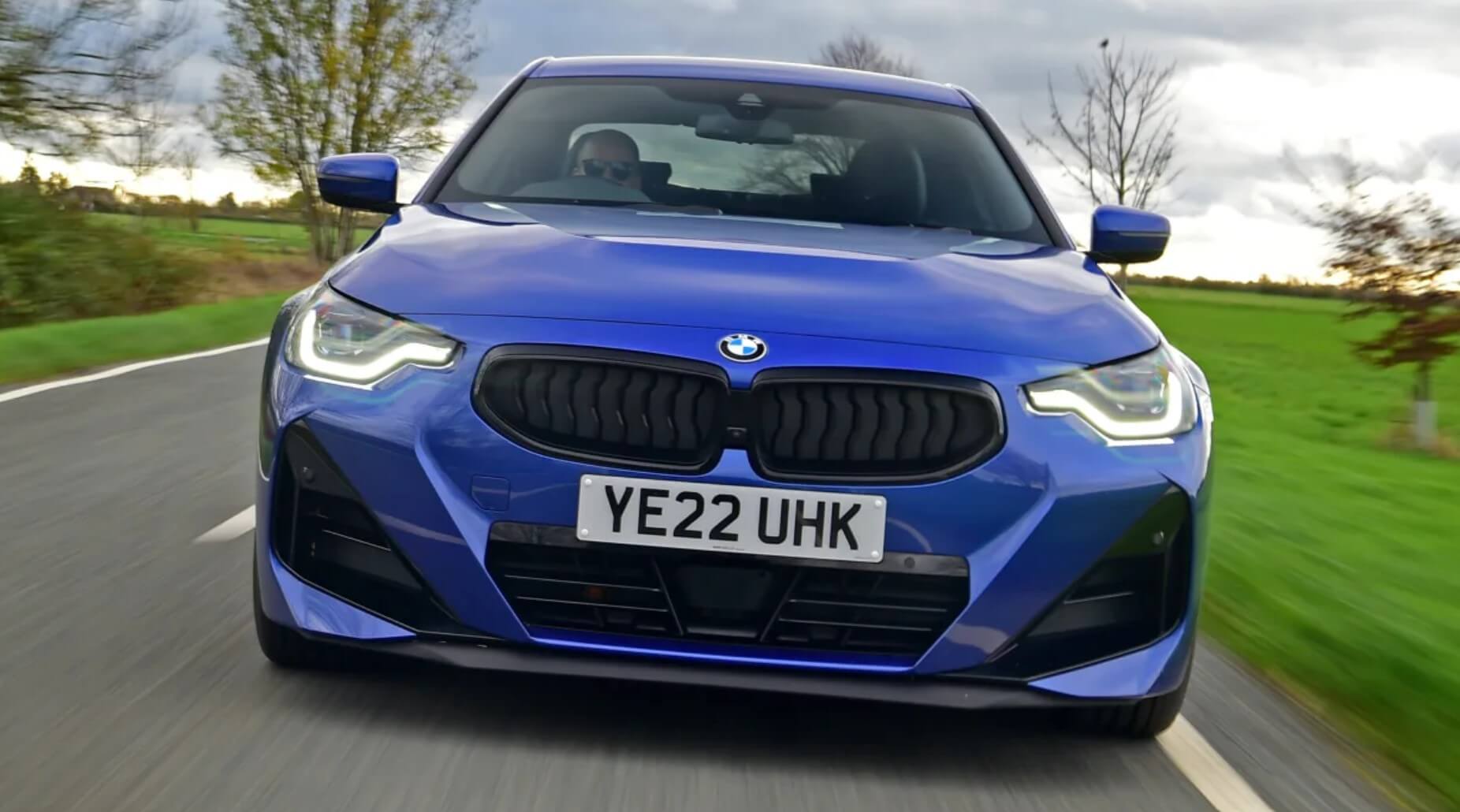Rear-wheel-drive sports cars go head to head as the new Toyota GR86 coupe takes on the two-door BMW 230i.
Drivers in search of a fun, affordable, rear-wheel-drive machine have been hard done by in recent years. All is not lost, though, and the Toyota GR86 is proof. We don’t know what’s on the menu at Toyota’s Gazoo Racing canteen, but whatever they’re feeding those engineers, the results are certainly exciting; the GR Supra, GR Yaris and GR Corolla are all great, but the GR86 might be the most exciting of all.
It deserves some stiff competition, which comes here in the shape of the BMW 230i. According to its maker, only nine per cent of buyers will go for this powertrain, but we have a feeling that it might strike the perfect balance for the firm’s latest coupe.
Our colleagues in the UK performed this comparison test where the two models are currently available to put head to head.
Toyota GR86 Roadtest
The GR86 range is simple – there’s a choice of GT or GTS, a manual or an automatic transmission, and one of seven colours. Pricing starts at $43,240 before on-road costs, making it easily the most affordable sports coupe here.
In general, that list price really jumps out as being quite cheap for a modern performance car. Once you look through the specs, it seems almost too good to be true.
Toyota started the development of the GR86 with its predecessor, the 86. The GR rides on the same basic underpinnings, but almost every component has received a fairly extensive overhaul.
The structure itself has been made stronger – Toyota claims a 50 per cent increase in rigidity when compared with the GT86 – yet despite a modest increase in size to improve both refinement and crash safety, the 1267kg kerbweight is largely the same as before. A focus on slimming down individual parts can be thanked for that.
The bonnet, roof and front wings are all made of aluminium, while the seats, exhaust system and even the propshafts are lighter than those on the GR86’s predecessor. The centre of mass is 1.6mm lower, and the 53:47 weight bias is 0.05 per cent further back. Even the engine has gone on a diet; resin rocker covers, hollow valves and thinner cylinder liners play a part in changing that front/rear balance.
The engine isn’t just lighter, though. The GT86’s 2.0-litre flat four has been bored out to 2.4 litres. Its 174kW and 250Nm of torque are sent to the rear wheels through a six-speed manual transmission and Torsen limited-slip differential. You get MacPherson-strut suspension at the front, and a double-wishbone arrangement at the rear corners.
It’s inside where that lower price makes itself felt. The dashboard design isn’t much to look at, with a fairly simple layout, and the plastics feel a little hard and scratchy, too. However, all the basics that matter to the actual process of driving are brilliant. The driving position is spot on, the seat and wheel have plenty of adjustment (although the chance to move the seat belt height would be a plus) and the gearlever is positioned close to the wheel, so it’s a quick grab away. Visibility is okay by coupe standards, too. It all builds towards excitement.
Prod the GR86’s starter button, and the engine wakes into a slightly busy, almost gravelly idle. It’s not the most tuneful unit at any revs, but immediately the sensitivity of the throttle is obvious – rev-matching gearchanges need just the gentlest of taps on the right pedal. It’s a feeling of delicacy which, even a few yards along a road, can be felt through the steering and the brakes, too. The gearshift is very precise, but has a decent weight to it.
At low speeds, the bumps and ridges in the road can be felt through the taut suspension and a steering rack that’s beautifully weighted and transmits lots of information through your fingertips. Despite this, the GR86 never feels unrefined, nor is the ride harsh; those coming to the coupe from a hot hatchback – even Toyota’s own GR Yaris – will find it to be a much more compliant car to live with every day.
Find the right road, and the GR86 will put a bigger grin on your face than any current hot hatch, too. In an age of 300kW five-doors, the GR emphatically proves that making the most of a more modest power output is far more satisfying. The non-turbocharged engine needs revs to work at its best, but it relishes in being thrashed. Closely stacked gear ratios mean that you can explore the full rev range on the road without troubling the national speed limit, too. It’s by no means slow, though – a 0-100km/h time of 6.3 seconds is only 0.4 seconds shy of the BMW’s – and the fact that you have to work it to achieve that performance makes it all the more satisfying.
It’s the chassis that’s the clear highlight, though. The purity of that steering is more pronounced as you increase your pace, allowing the driver to position the GR86 on the road perfectly. Body roll is minimal, yet you can still use the weight transfer of the car to adjust its attitude through turns; and whether you choose to do that with the steering, brakes or throttle – or a combination of the three – it’s confidence-inspiring and so rewarding to get right. Few new models will help you understand and enjoy the nuances of car control so comprehensively. In short, it’s one of the finest-handling cars you can buy today – at any price.
Most GR86 buyers will be more concerned about the drive than the space, and that’s fortunate. The boot is shallow with a small opening, and the 226-litre volume is just about enough for a long weekend away for two. There are technically four seats, but the rears are next to useless; it’s best to just fold them so you’ve got a two-seater with a decent amount of storage.
BMW 320i Roadtest
Prices for the BMW 230i are much higher than its rival here. Before options, 230i starts at $70,900 before on-road costs, but it comes with nicer equipment that’s more pleasing to live with.
Much like the other models in the 2 Series Coupe line-up, the 230i makes use of BMW’s Cluster Architecture platform, which are the same underpinnings used by the larger 4 Series. With that comes all the tech, powertrain and structural benefits of the bigger car, but it also brings weight; at 1600kg, the 230i is more than 300kg heavier than its rival here. However, it’s also a useful 165kg lighter than the six-cylinder M240i xDrive.
While the 230i has more weight to lug around than the GR86, it compensates with more power, too. The 180kW peak is a modest 6kW up on the Toyota, but that power is produced all the way from 4500-6500rpm, whereas peak output doesn’t arrive until 7000rpm in the GR.
Even more significant is the torque. The BMW’s 2.0-litre unit is boosted by a turbocharger, so the engine’s 400Nm maximum arrives from just 1600rpm and continues right the way through to 4000rpm. The Toyota is significantly down on that, and you need to wind the engine up to 3700rpm before it reaches its 250Nm peak.
The BMW goes some way to justifying its higher price with a much more luxurious cabin. The materials have a much more expensive appearance, its wide centre console feels more sturdy and the tech on offer is far more advanced.
Ambient lighting in the doors adds to the feeling of expense, but like the Toyota, the BMW has a great driving position. It does feel more substantial – the bonnet line is higher, meaning that the extremities of the car are harder to judge, and this hints at the way this car compares with the Toyota out on the road.
In isolation, the 2 Series is a cracking car to drive. The chassis is very capable, with a feeling that all of its mass is centred around your hips – much like the Toyota.
However, a car that’s as brilliant to drive quickly as the GR86 is reveals the BMW’s flaws – small though they are. Key among these is the steering. Beside the superb precision of the Toyota, the BMW’s rack doesn’t offer the same confidence, nor does it load up as naturally when you apply lock. The result is that you’ll often have more than one go at turning into a corner as you work out what response you’ll get.
The feedback is dulled by the needlessly thick and slightly soft steering wheel rim that BMW continues to persist with. In other words, you turn into a corner in the 230i trusting that it’ll grip, while the Toyota confirms as much as you apply lock, thanks to the constant feedback.
While that lesser 220i will be the far more popular option than the 230i in the 2 Series range, those buyers will be missing out.
Ring its neck, and the lesser engine feels a little insipid; the extra shove in this more potent version can be felt throughout the rev range. It’s enough to make the difference between a coupe that’s built for appearance and one that could actually be seen as a performance car.
If there’s one slight downside, it’s that the four-cylinder unit doesn’t make a particularly soulful sound. It’s a deeper, more bassy tone than the Toyota. Refinement is excellent, though. Head for the motorway and the transmission shuffles up to eighth and the revs drop right down. Coupled with excellent stability and a compliant ride, this makes the 2 Series a fabulous long-distance cruiser.
Despite being a coupe, the 2 Series boasts genuinely usable back seats. Even adults will be able to fit in the back without too much complaint, while the seats themselves are comfortable and supportive.
There’s space for all their luggage, too. A 390-litre boot is excellent, and the opening is wide enough to make it not too much of a hardship to load large suitcases inside. Large door pockets, a generous central bin, a couple of cup-holders and a covered cubby to hold a smartphone or two all contribute to a car that hasn’t sacrificed any everyday usability in its quest for driving fun.
The winner
First place: Toyota GR86
The chassis is almost flawless; it’s brilliant to drive yet not difficult to live with in the slightest. It’s more than quick enough, it’s backed up by a decent warranty and rarity is guaranteed. Then there’s the price; all of this for under 50 grand makes it an absolute bargain.
Second place: BMW 230i
In most of the areas which don’t contribute to driving thrills – rear-seat space, boot capacity and infotainment tech – the BMW has a clear advantage over the Toyota. Against most competition, it would hold its own from behind the wheel, too. However, against a car so brilliant to drive, the 230i can’t quite keep up. It’s also much more expensive to buy in the first place.
Shane Wilkinson







